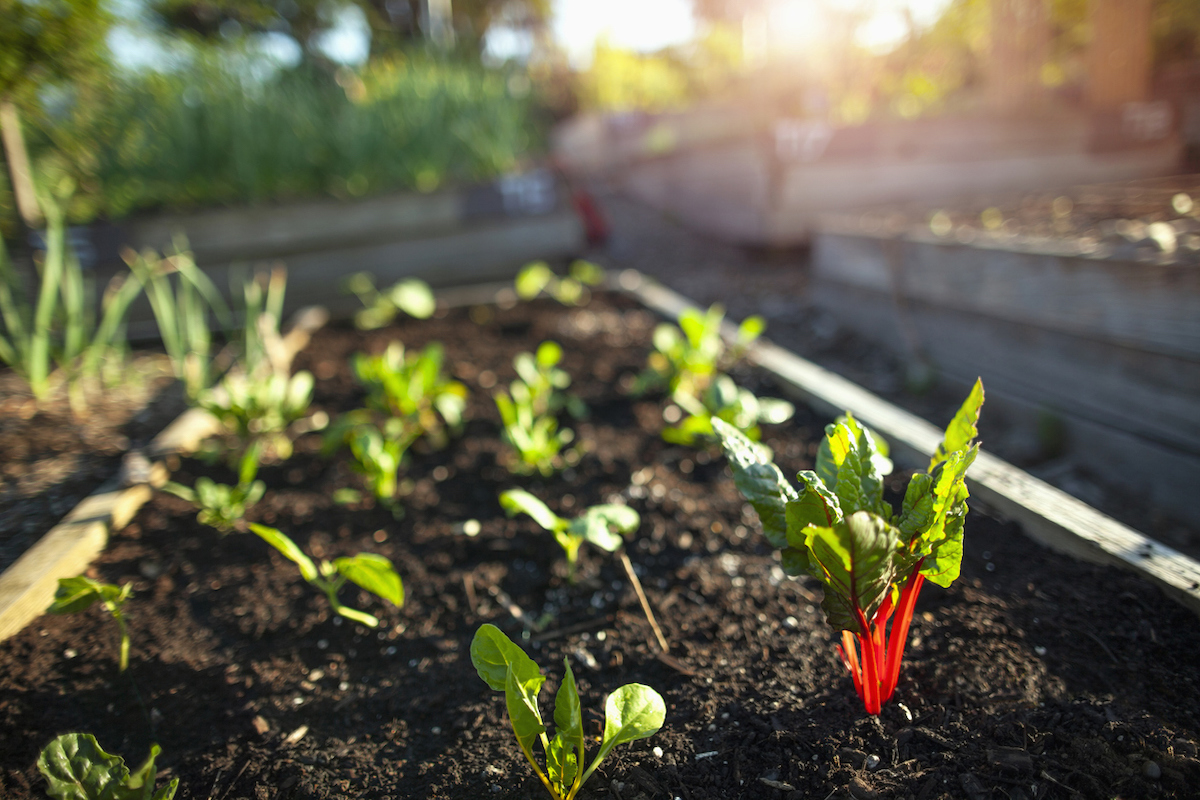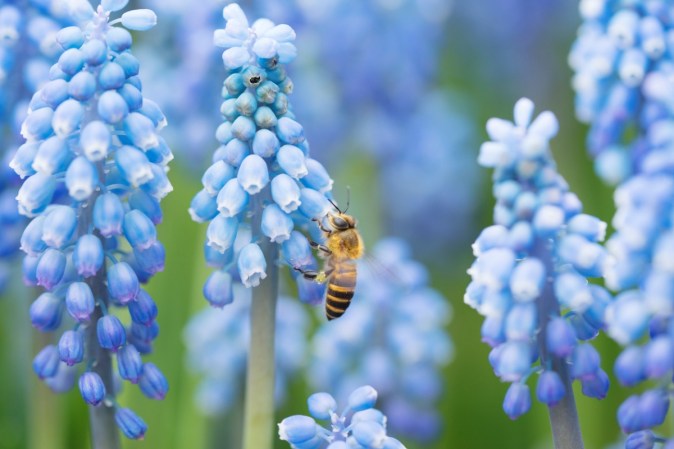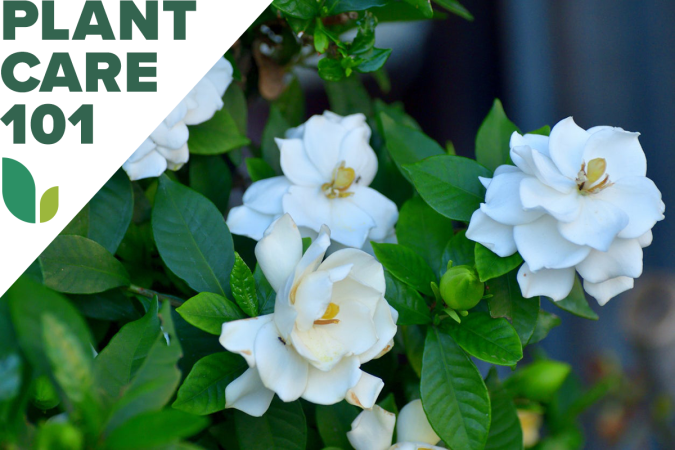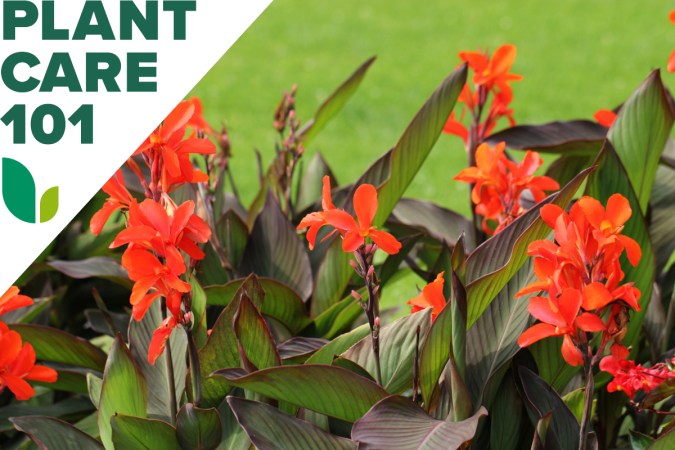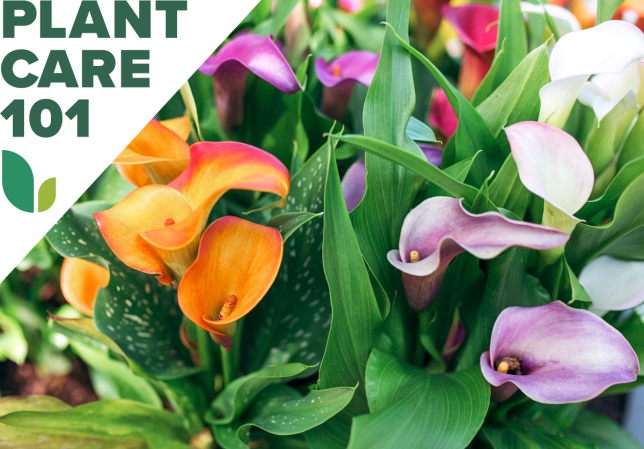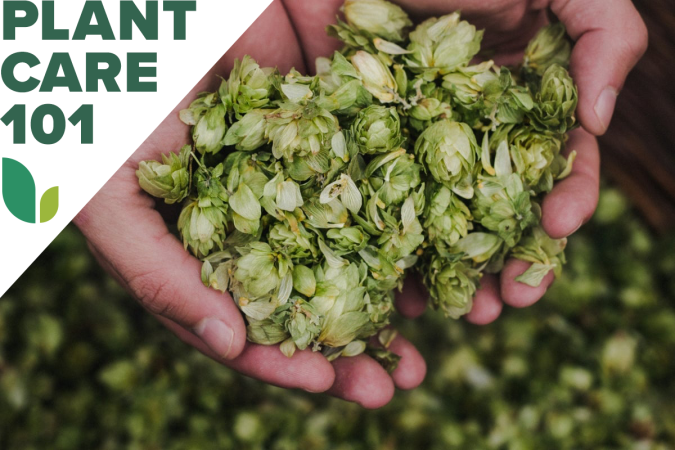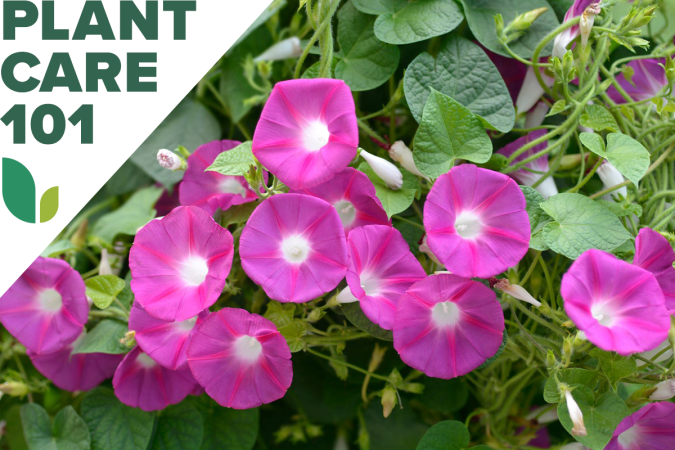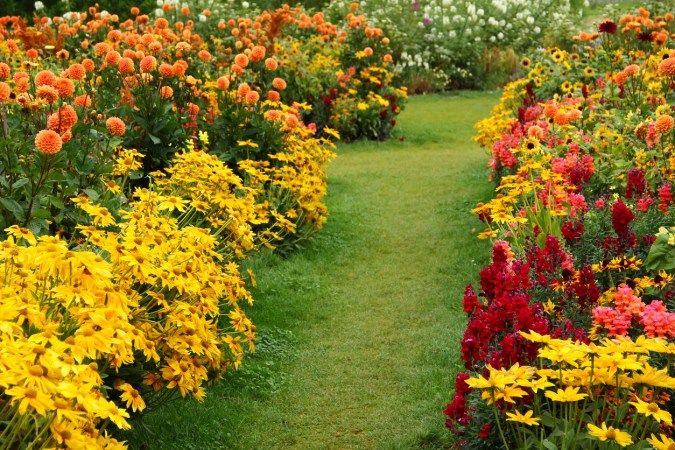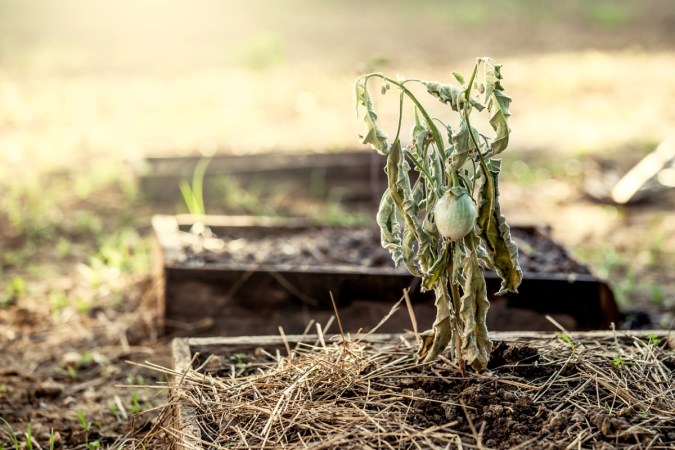We may earn revenue from the products available on this page and participate in affiliate programs. Learn More ›
Do you think it’s too late in the year to get into the garden? Actually, August is a great time to pick up your gardening gloves and tools and get to work. Whether you’re having a really late start to the gardening season or you’re a prolific succession planter working on maximizing your garden’s output, planting in August can add fall crops and color.
After clearing out any spent spring and summer plants, there’s plenty of space in the garden or in containers to add new greenery, florals, herbs, or vegetables. Depending on where you live, you might have many months of gardening ahead of you.
Want to know what to plant in August? Here are some varieties you can add to your garden beds in late summer.
1. Kale (Brassica oleracea)
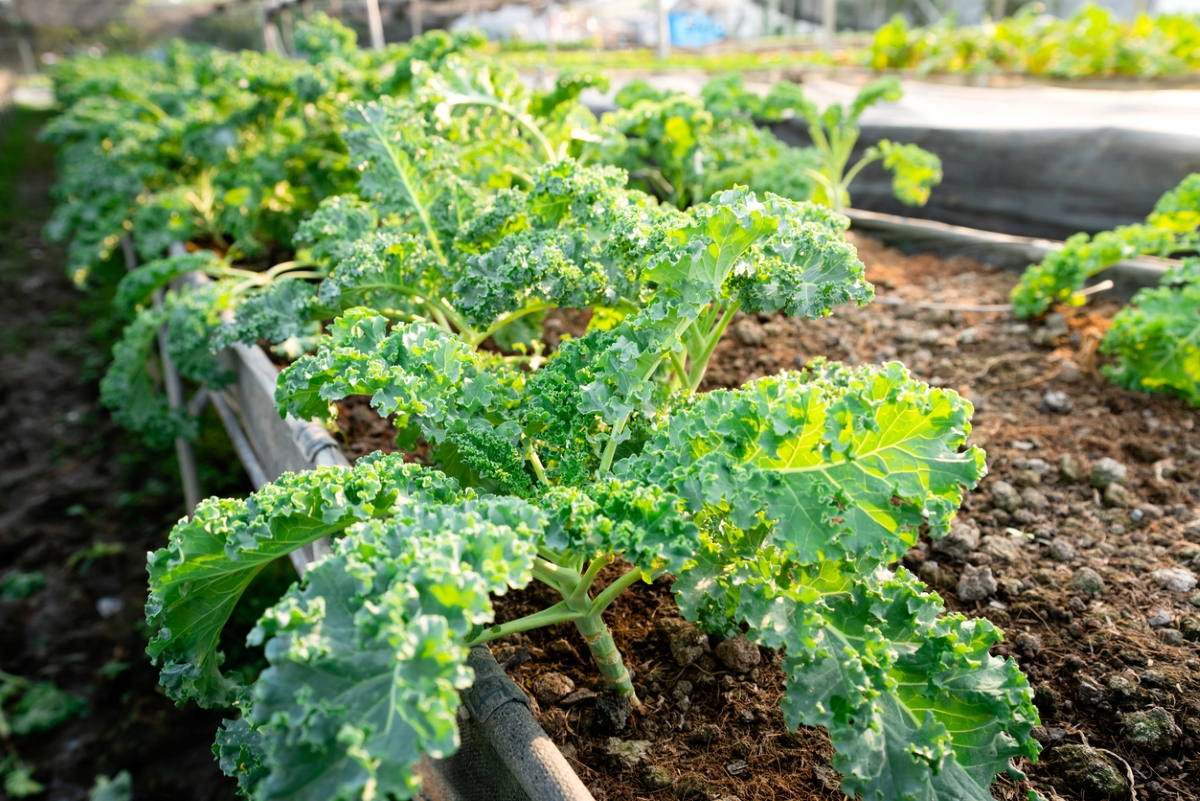
Kale is known for its hardiness, and grows well into winter. Gardeners can direct-sow seeds in the garden throughout August, so there’s no need to transplant. These are easy plants to grow; the biggest issue some kale growers might have is keeping the soil damp in hot climates. Plus, make sure to give them a side dressing with nitrogen-rich fertilizer once they’re established. Upcoming frost isn’t a bad thing either, since it helps improve kale’s flavor.
USDA Hardiness Zones: 2 to 11
2. Black-Eyed Susans (Rudbeckia hirta)
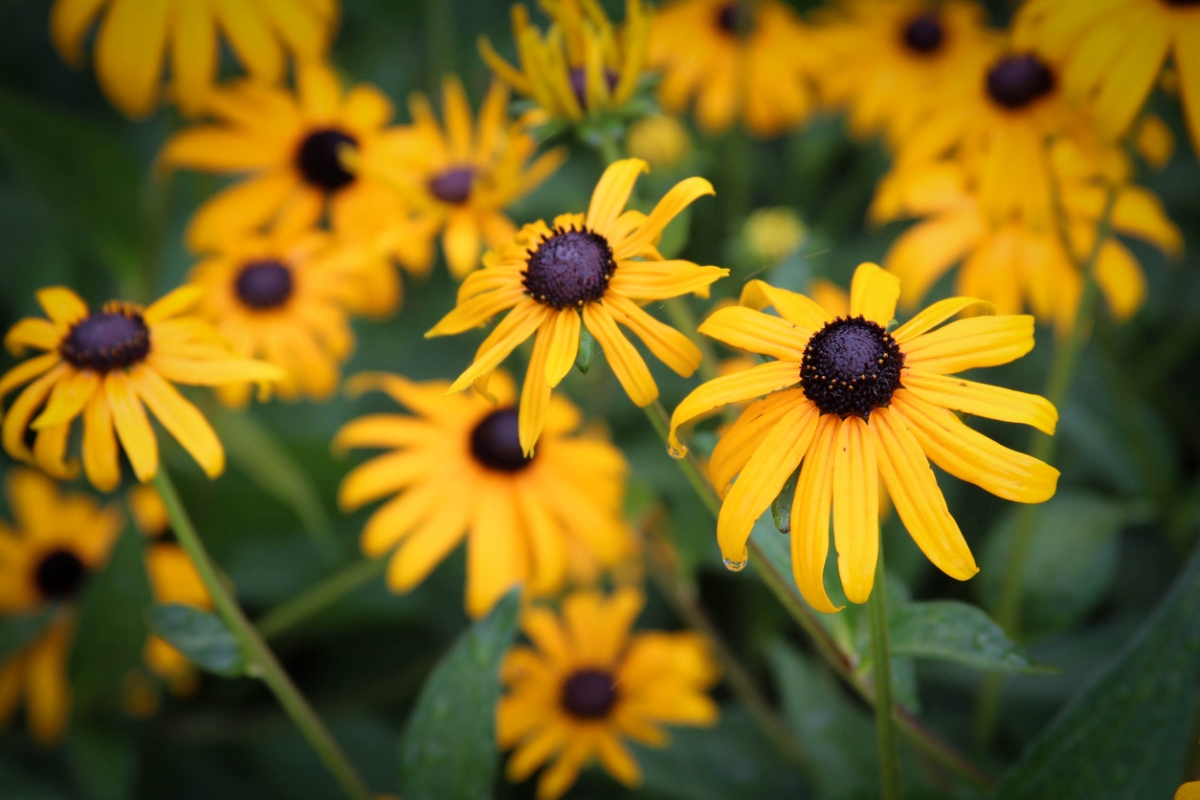
Add a pop of color to the garden with these drought-resistant flowers that bloom into November (depending on your location). These plants are great for pollinators, and deer don’t care for them too much, making them a must-have for the autumn garden bed. If you’re propagating these from seed, they need several days of regular moisture to germinate, so you might have to be on standby with a watering can initially.
Once growing, black-eyed Susans like moist to dry soil, so if you forget to water them—even on hot August days—they’ll likely be fine.
USDA Hardiness Zones: 3 to 7
3. Mint (Mentha piperita or M. spicata L.)
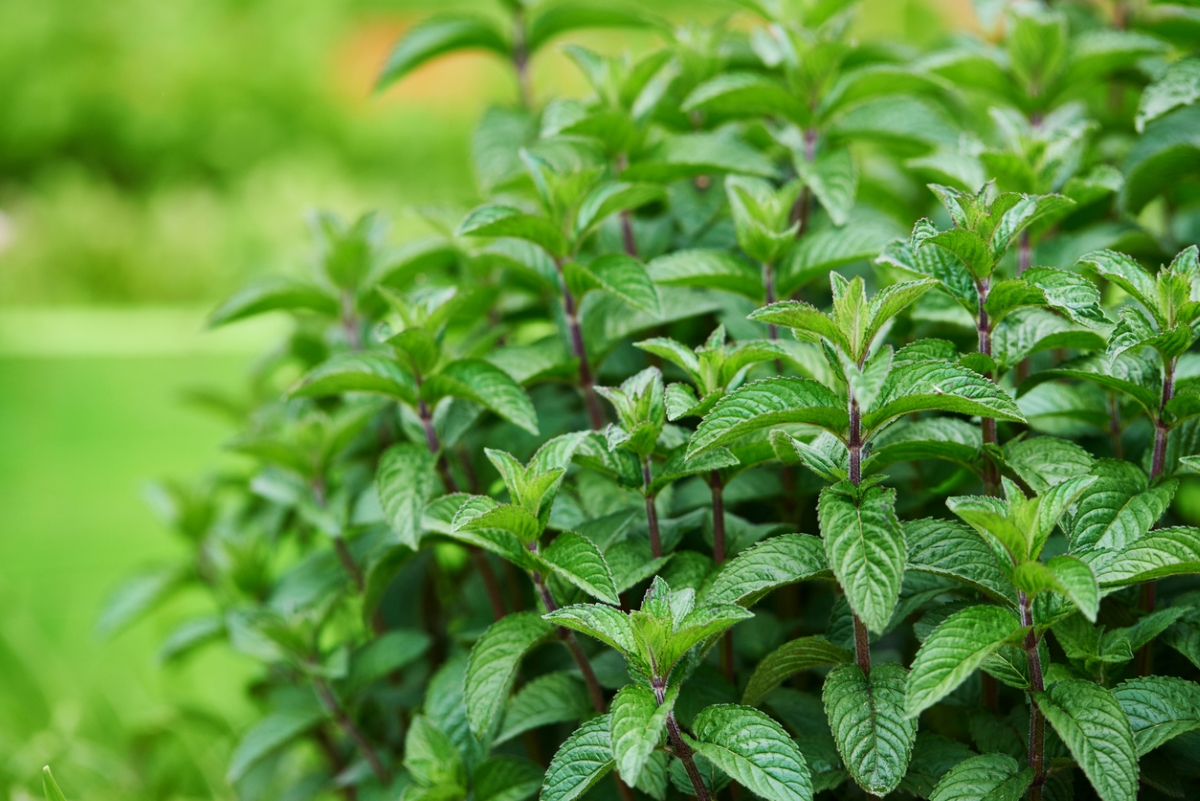
There are many varieties of mint you can add to your garden. Though spring is often the time for planting, gardeners can add this perennial herb to their garden beds into the fall. Even though mint plants love sun, it is best to avoid planting them during a hot dry spell.
Mint seeds take a long time to germinate, so your best bet to get the most out of these plants is to plug in young plants or grow them from cuttings. This herb grows quickly, so you’ll have a bounty of mint this season, but plant them in a container or bucket in the ground to prevent them from taking over a garden bed.
USDA Hardiness Zones: 3 to 8
4. Cleomes (Cleome hassleriana)
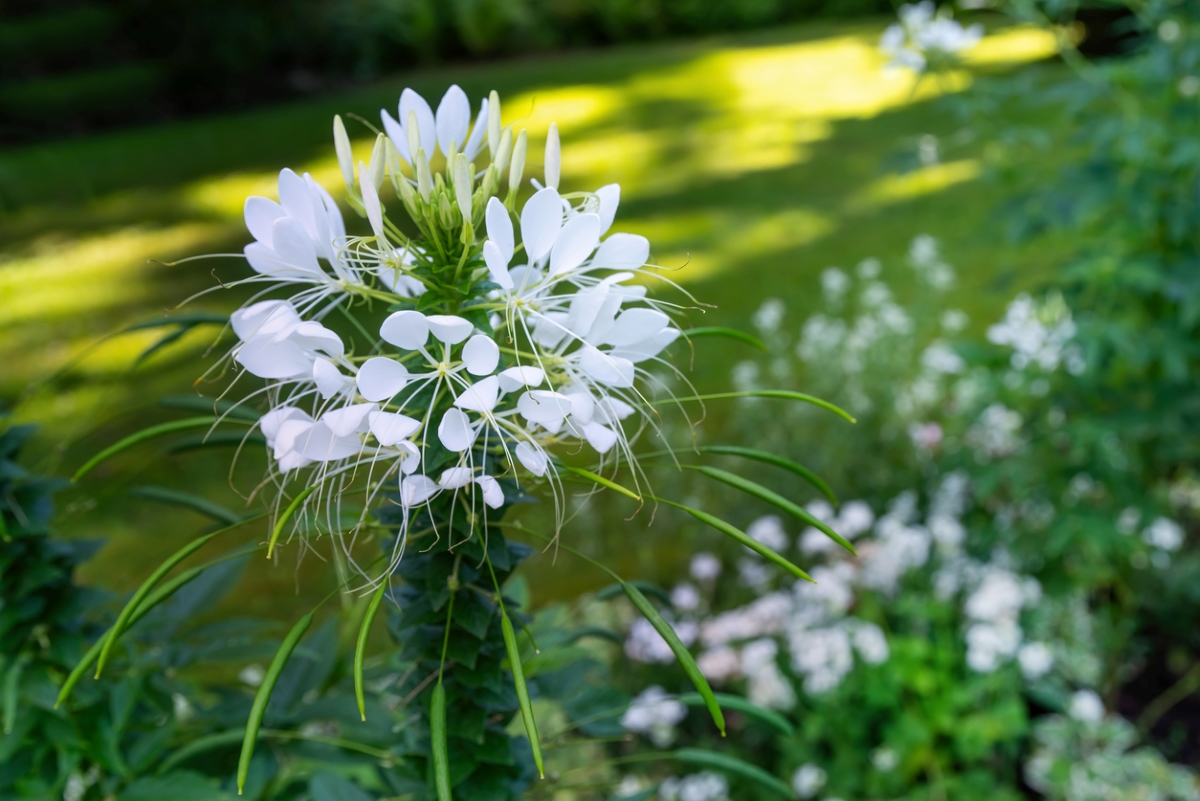
Known as the spider flower, cleome adds elegance to a flower or butterfly garden. As far as flowers to plant in August, this one is a crowd favorite—even though it’s an annual. These plants bloom from June to frost, but if you add established cleomes to your garden in August, they’ll remain beautiful well into the cool season. Cleome’s dried flower heads are also a food source for birds in the fall, which can be a real treat for backyard bird watchers.
USDA Hardiness Zones: 9 to 10
5. Radishes (Raphanus sativus var. radicula)
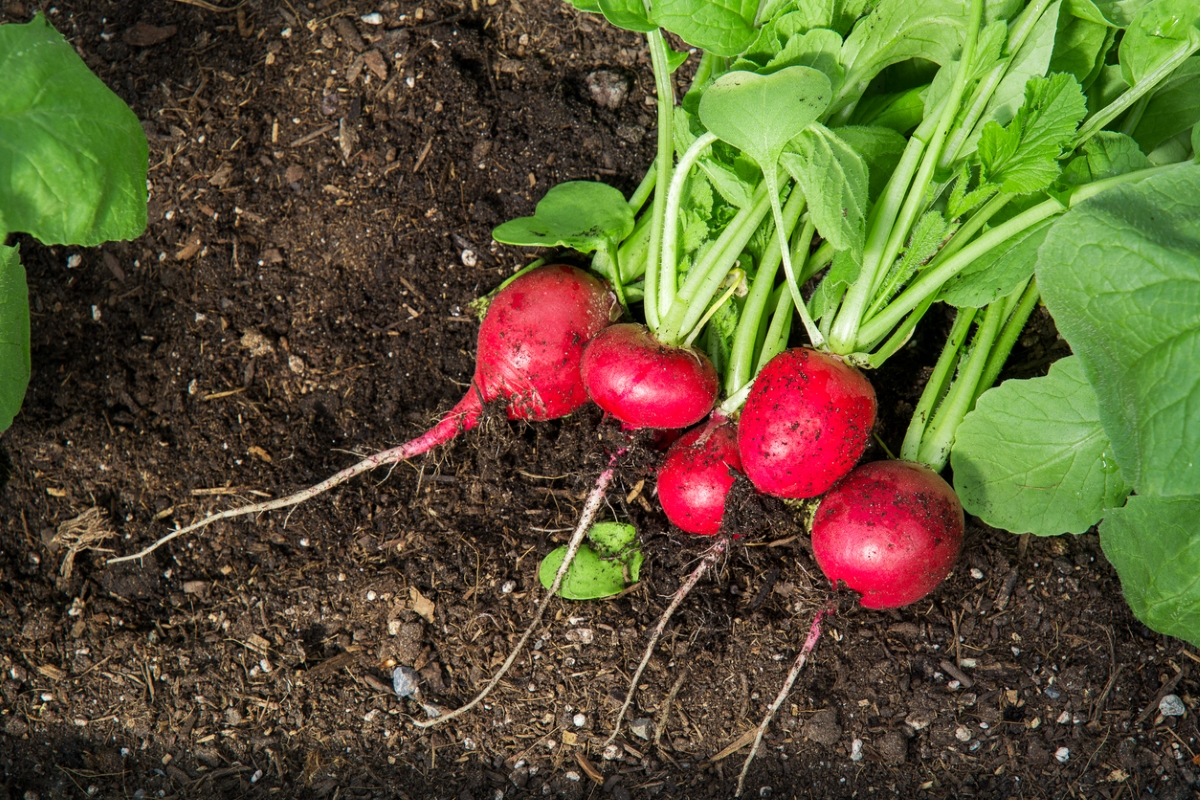
Keep enjoying the food from your backyard when you add radishes to your garden in August. Planting at the tail end of summer produces a late fall harvest, offering you a root vegetable that you can store fresh for up to 2 months—do not keep them in the fridge as they will lose moisture and shrivel up.
These root vegetables love cooler conditions and need rain or regular watering to produce radishes full of flavor. You can start harvesting once they become a usable size, which is possible in as few as 3 weeks after August planting.
USDA Hardiness Zones: 2 to 11
RELATED: 11 Types of Asian Greens and How to Grow Them
6. Cornflowers (Centaurea cyanus)
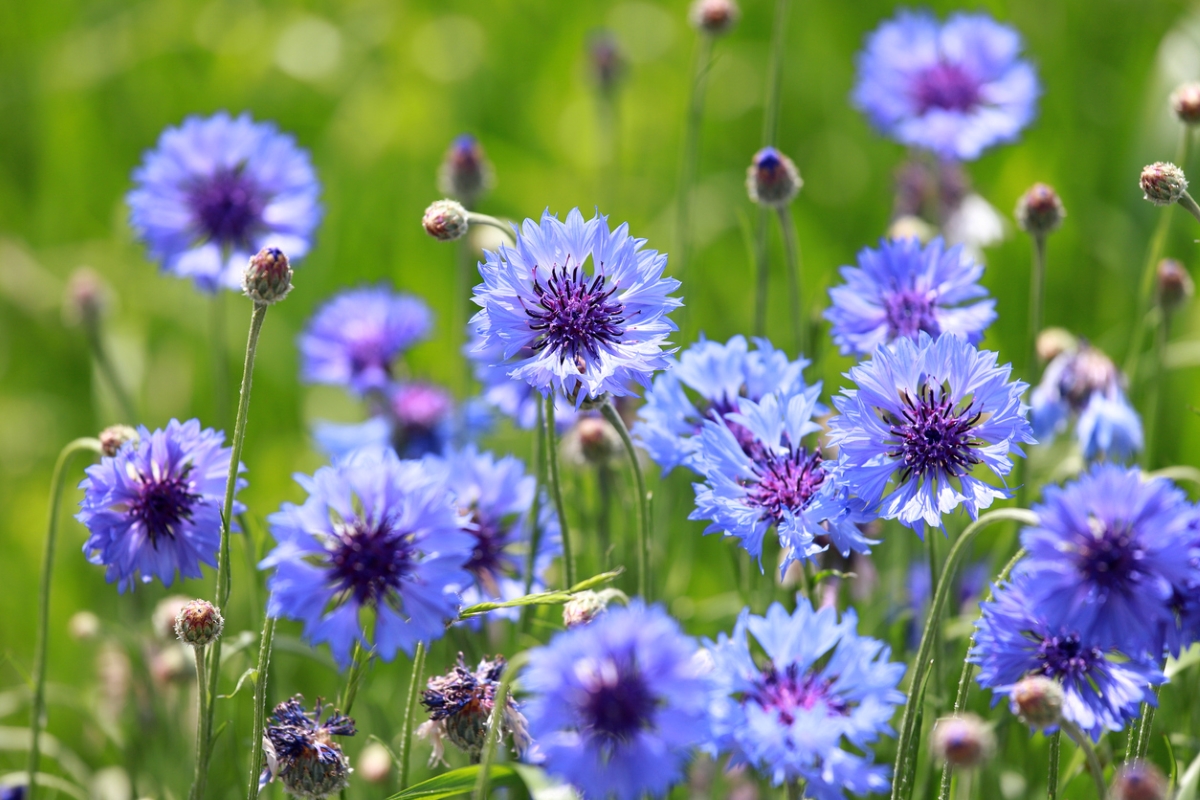
Add hues of intense blue to a garden container by planting cornflowers from seed in August in mild climates. These wildflowers are hardy, low-maintenance, cool-season annuals that can thrive in many conditions—and they’re edible too. Since they last a long time, they’ll maintain their country charm in mild winter climates. Cornflowers don’t require much work to look good, but since they reseed independently, deadheading may be necessary to limit their growth.
USDA Hardiness Zones: 2 to 11
7. Broccoli (Brassica oleracea var. italica)
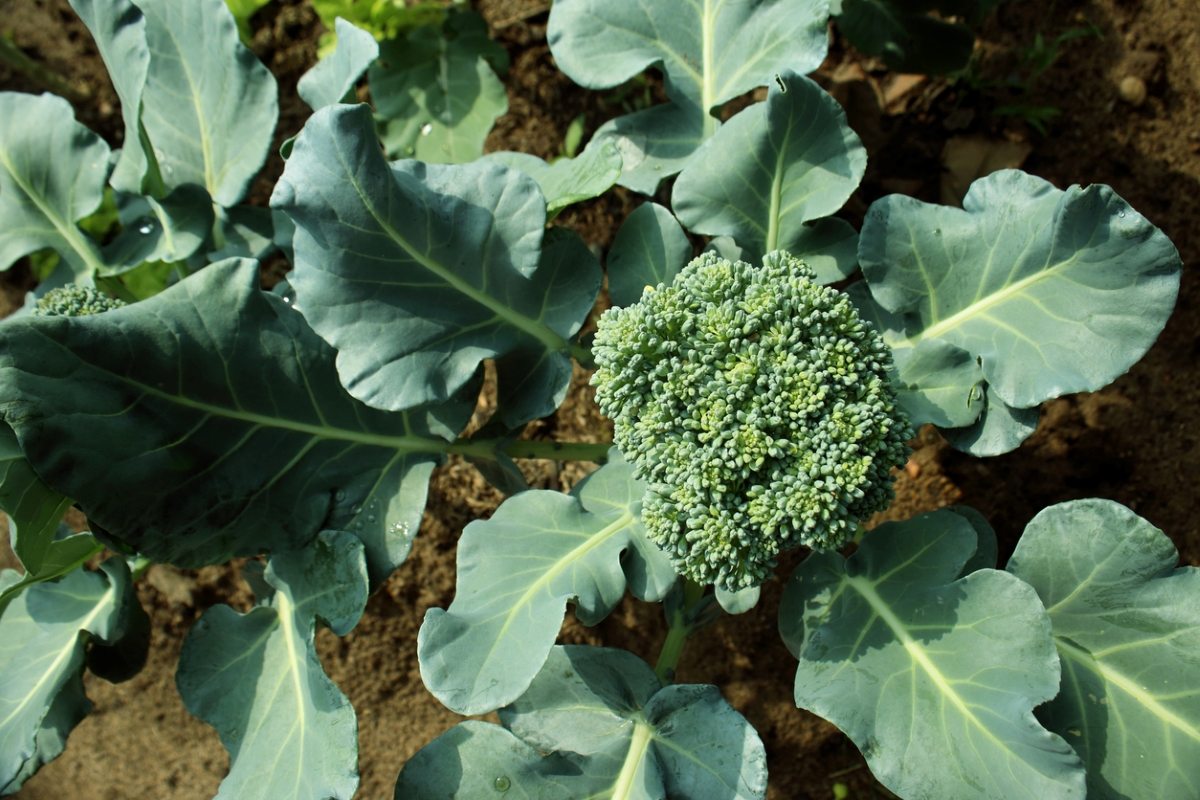
Broccoli is a staple at the dinner table, and it’s reasonably easy to grow in the backyard. Gardeners love planting broccoli in August because it keeps growing even after a few light frosts. Start your broccoli seeds indoors in July if you want them planted in the garden for August. It takes about 2 weeks for the seeds to germinate.
Be sure to provide consistent watering; otherwise, broccoli heads might taste bitter from water stress. Cut the heads off as they mature, and the side shoots may develop into additional broccoli heads to harvest later in the season.
USDA Hardiness Zones: 2 to 11
8. Marigolds (Tagetes erecta)
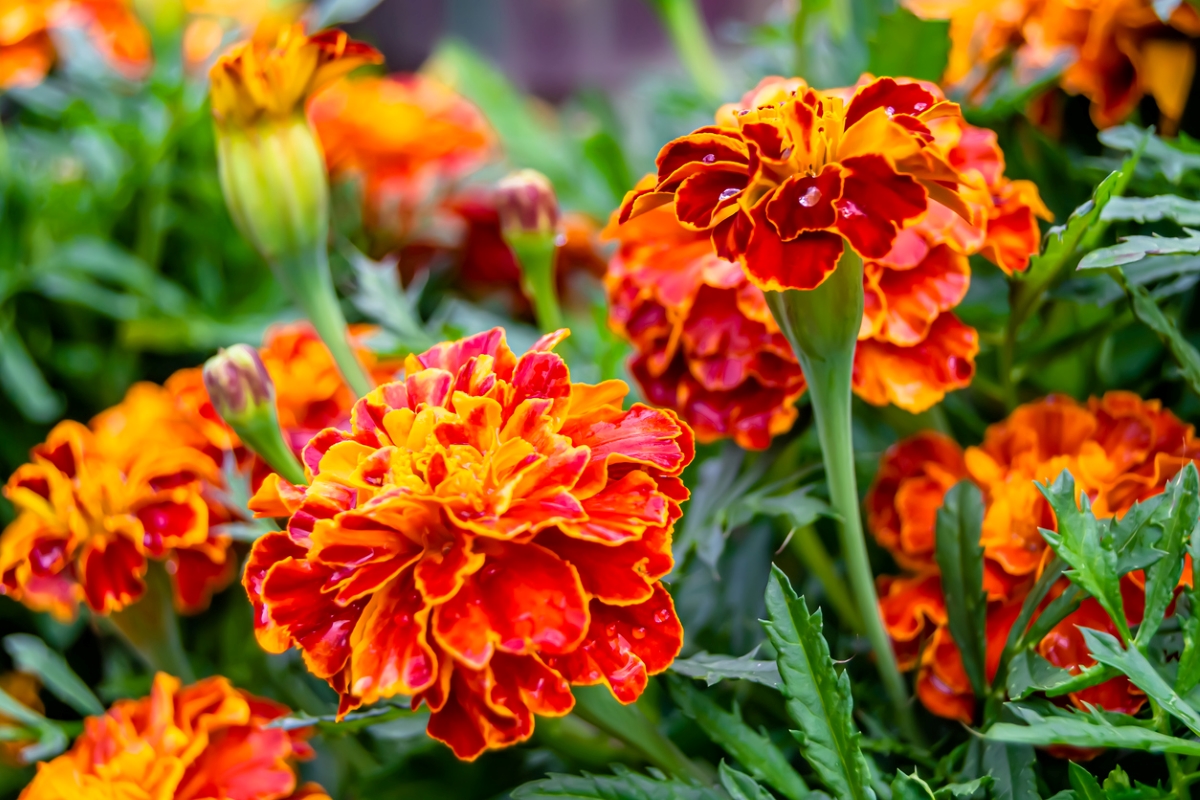
Marigolds complement the upcoming fall foliage with their warm hues, plus they are excellent for companion planting near a vegetable garden because their fragrance deters insects. While some consider these spring flowers, marigolds thrive when planted at the tail end of August or early September because they establish themselves quickly from seed, perform wonderfully, and last until the first hard freeze.
Give marigolds full sun, well-draining soil, and medium watering to see these florals prosper in your August garden.
USDA Hardiness Zones: 2 to 11
9. Cucumbers (Cucumis sativus)
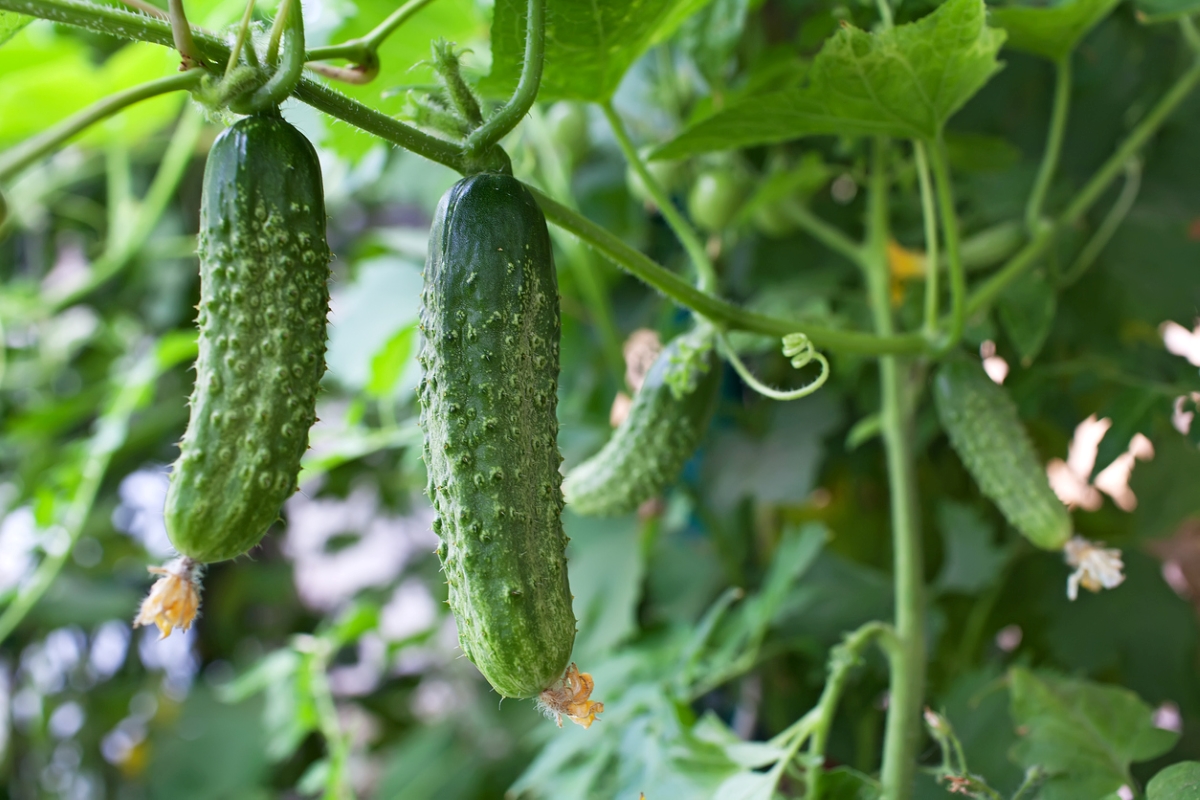
Succession planters know the joy of growing cucumbers—they take very little work to seed and can be grown in beds, containers, or on trellises. Some garden varieties are ready to harvest within 50 days of planting, making these veggies a fantastic addition to your August garden. Experienced gardeners time their cucumber planting between pest life cycles, making August a great time for their second planting (or a first if you’re late to the party).
USDA Hardiness Zones: 4 to 12
10. Spinach (Spinacia oleracea)
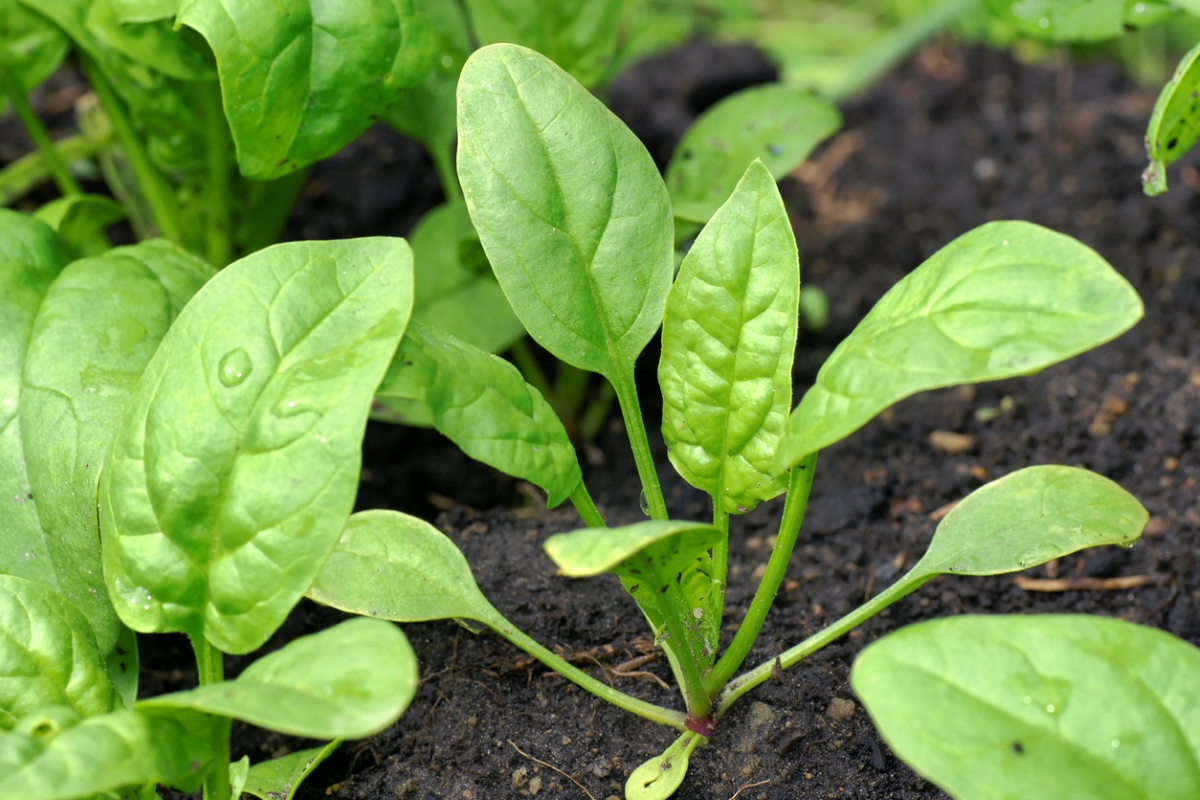
Though some consider August the end of the gardening season, it leaves plenty of time to grow spinach. Get these seeds into the ground or garden bed approximately 6 to 8 weeks before your area’s estimated first frost date, and you should make the cutoff to grow a hefty supply of spinach. These greens grow best when planted in soil temperatures between 45 and 68 degrees Fahrenheit.
Use a shade cloth to keep the plants cool during the tail end of summer. If you want to extend your growing season, cover them with plastic to keep them warm enough to produce through the fall and possibly into winter.
USDA Hardiness Zones: 2 to 11
11. Snapdragons (Antirrhinum majus)
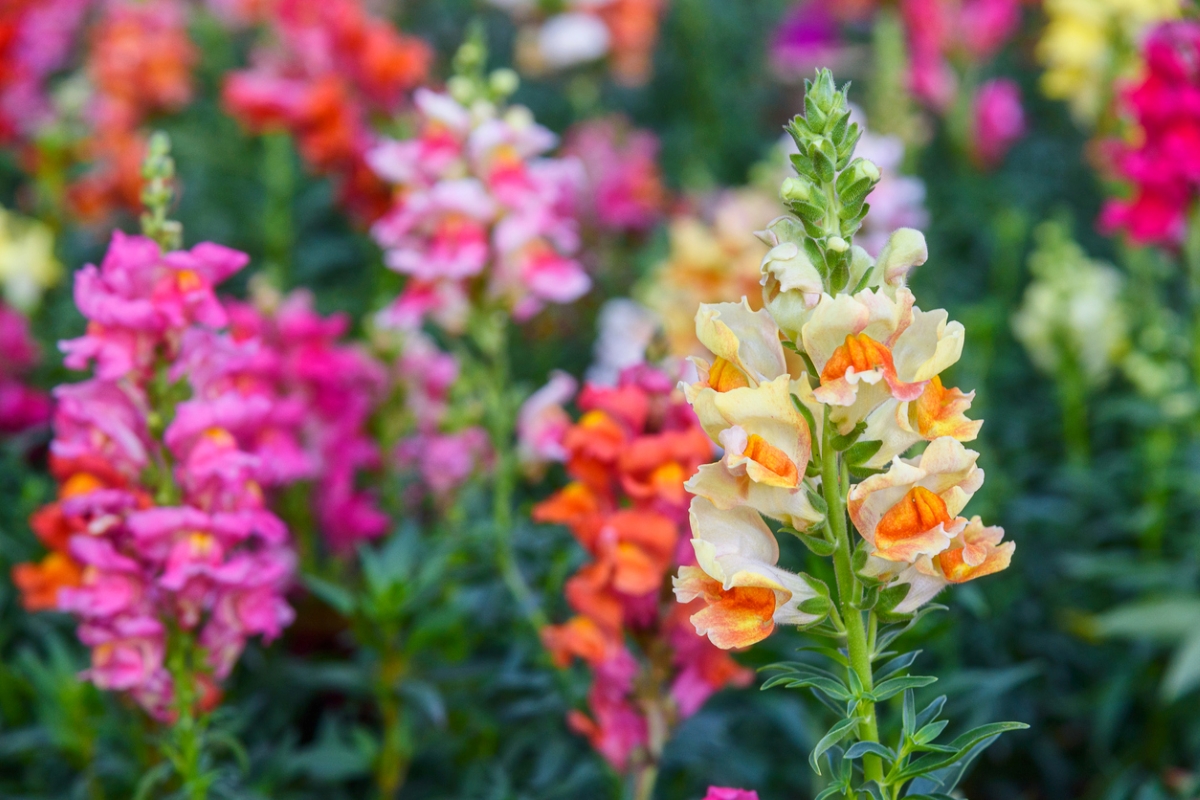
A lot of flowers lose their blooms when the cooler weather arrives. Snapdragons are very cold hardy, so August planting gives them time to establish to withstand mild winter temperatures. Depending on the variety, they can handle temperatures in the low 40s at night and low 70s during the day.
When planting these flowers for a fall crop, transplanting gives them a head start to establish themselves in a basket, container, or bed. From seed, it takes 70 or 80 days until they’re ready to harvest as cut flowers. Want to get the most life out of these plants? In some areas, gardeners can overwinter their snapdragons in tunnels.
USDA Hardiness Zones: 7 to 10
12. Turnips (Brassica rapa, Rapifera group)
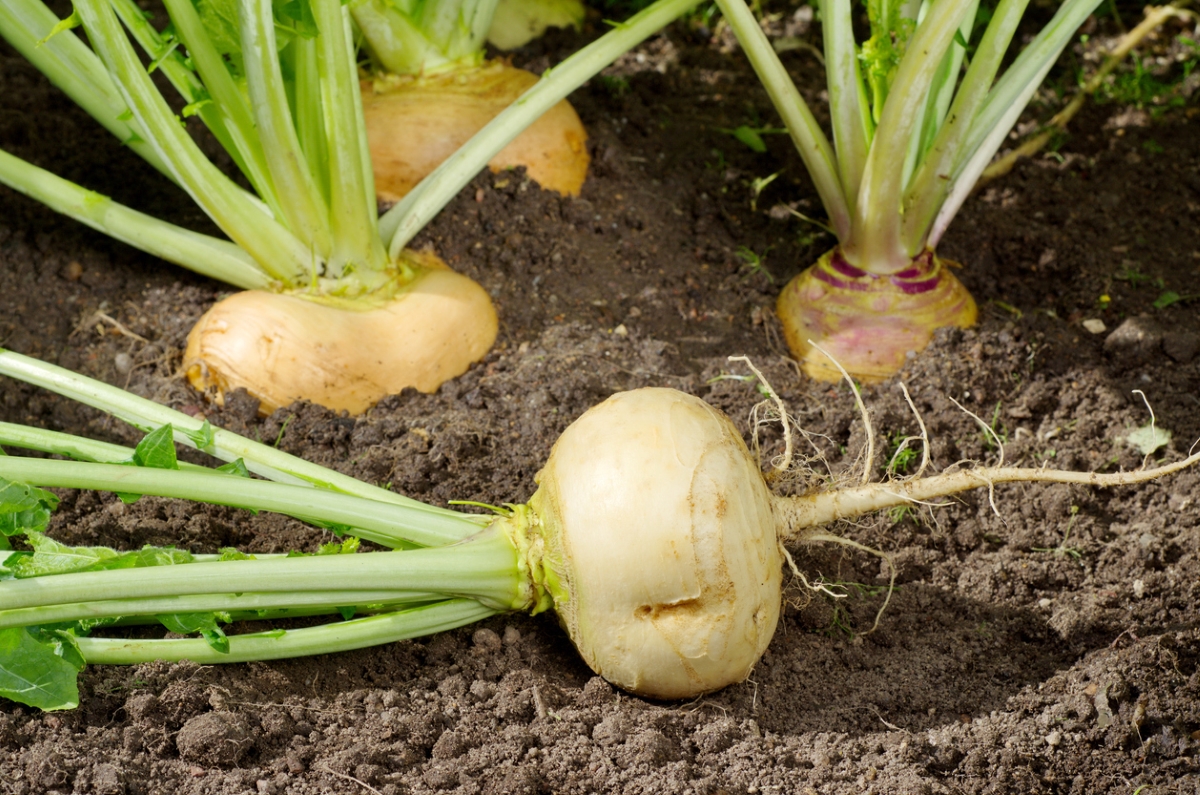
For gardeners who want to enjoy the fruits of their labor (or root vegetables of their labor), turnips are one of the best vegetables to plant in August. In as little as 6 weeks, young turnips are ready for consumption, a time when they are arguably the most delicious. Turnip greens (leaves) are also popular fall crops, becoming crispy in cooler night air.
These versatile veggies favor sunny locations and cool conditions in soil that retains its moisture. They’re best sown outdoors, and they grow rapidly, so you can squeeze them into a garden plot and harvest them before any slow-growing crops currently in the ground need the space.
USDA Hardiness Zones: 2 to 11
13. Violas (Viola spp.)
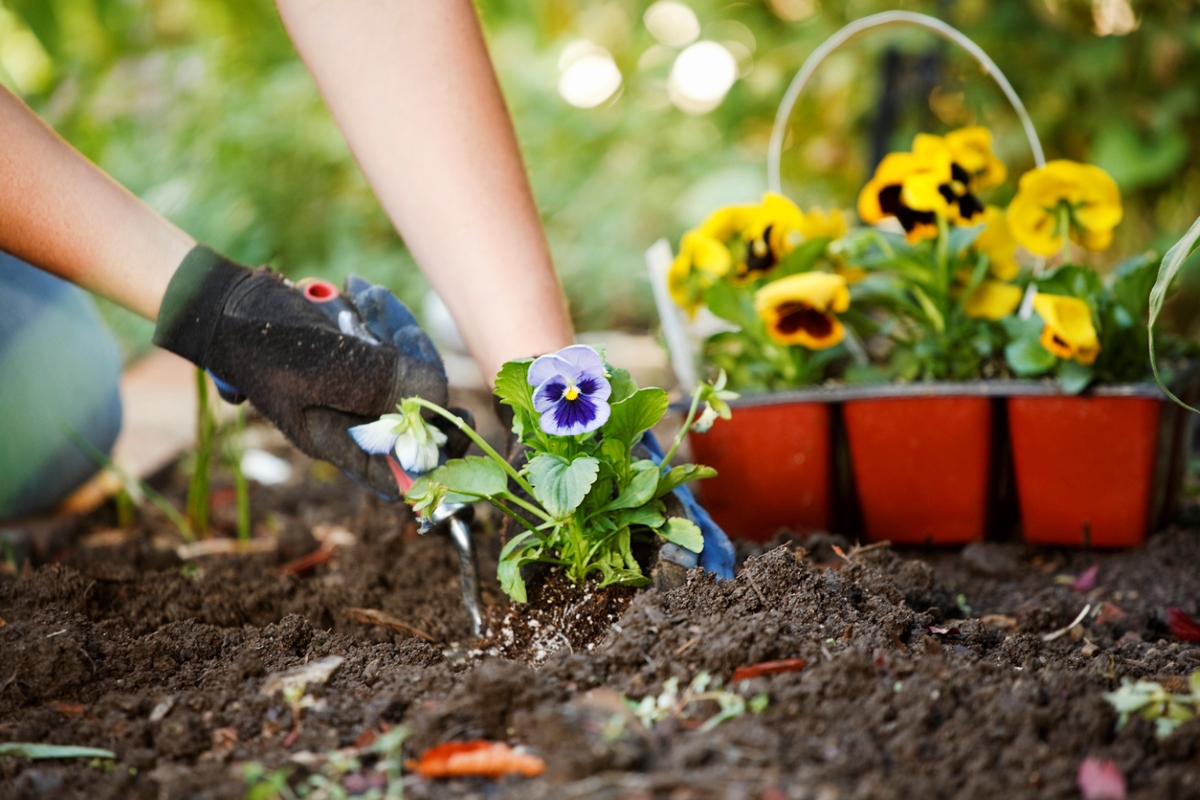
There are more than 500 species of violas, and these small, endearing flowers can perk up a garden bed in August. If you’ve attempted growing violas in the summer, they’ve likely become leggy or died off because they’re not fans of hot weather. They like full sun but not heat, so plant them in partial shade in hotter climates.
Come late August and early September, when the summer heat is less intense, these florals return to gardens across the country. They grow slowly, so when adding these flowers to your beds or containers in August, getting young plants from a nursery is a great way to go. Fertilize them monthly and remove the spent flowers to keep them growing as long as possible.
USDA Hardiness Zones: 3 to 8
14. Rosemary (Salvia rosmarinus)
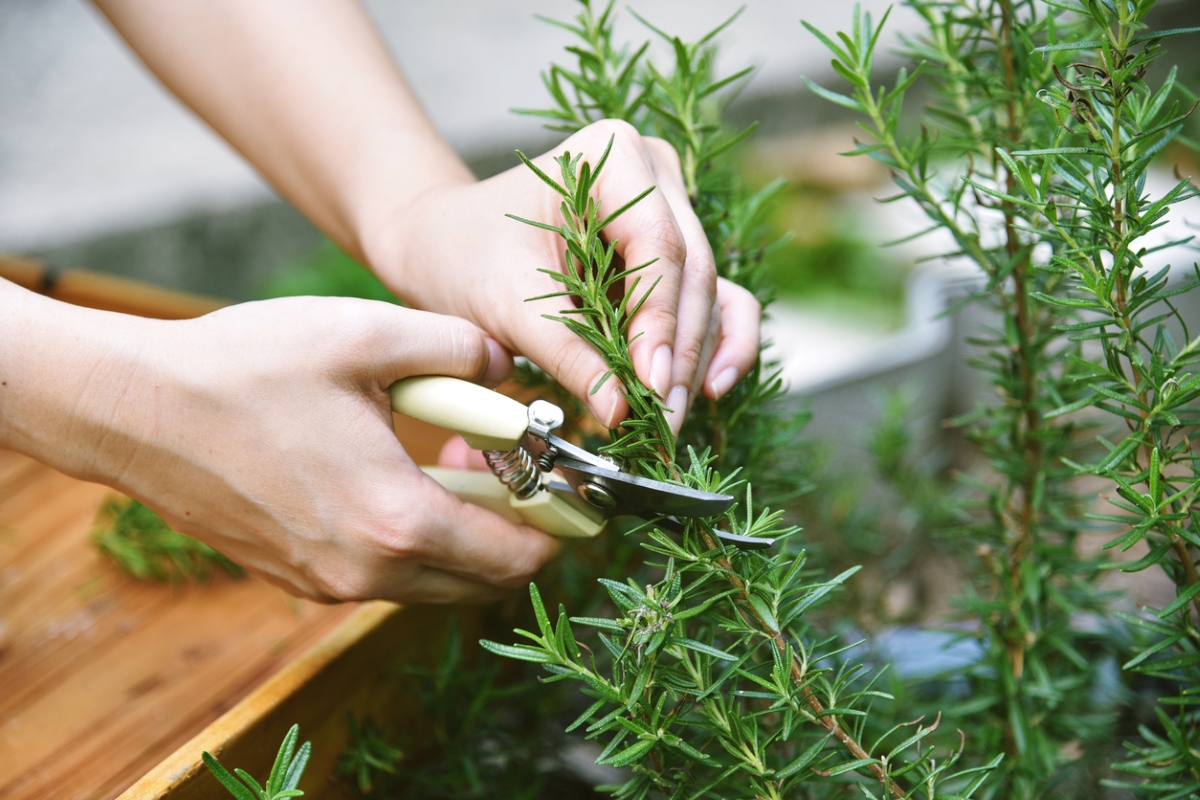
Fragrant, delicious rosemary is a garden staple that’s reliably hardy. If you want a perennial herb that lasts through mild winters outdoors, establishing a rosemary hedge is an excellent garden addition. Though it’s drought-tolerant, it does need water every few days, but don’t overwater, lest it becomes overly woody.
Growing from seed takes a long time, and produces mixed results. To get rosemary into the garden in August, start it from a plant and place it in a location with full sun or light shade. Try to plant it early in the month to give it time to harden off before fall.
USDA Hardiness Zones: 8 to 10
RELATED: 18 Fast-Growing Shrubs to Plant This Fall
15. Chrysanthemums (Chrysanthemum spp.)
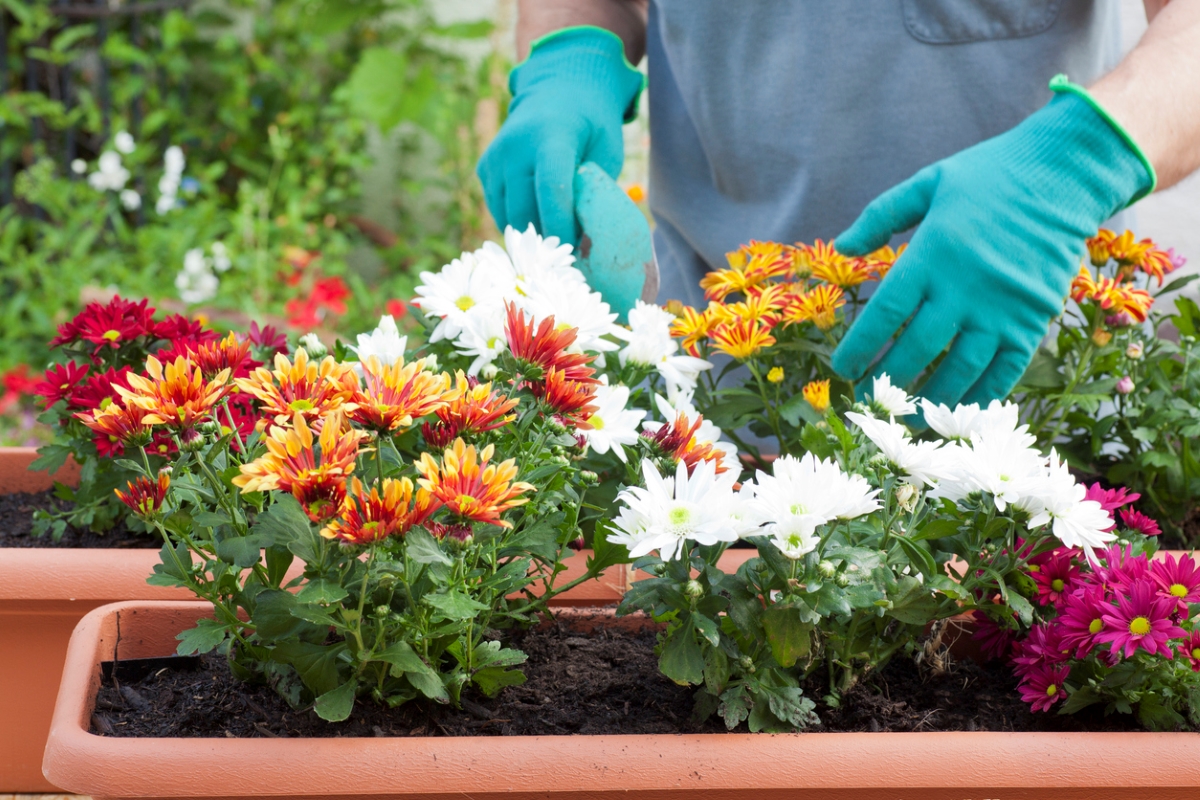
These popular fall perennials do their best when the days get shorter, so chrysanthemums are a great flower to plant in August. Typically, the flowering response of chrysanthemums is triggered by shorter days, which is why greenhouses often exclude light for hours each day to help them grow properly. During August or September plantings, the days are naturally shorter, assisting chrysanthemums to fare well in your garden beds.
Mums are relatively easy to grow in the garden, happy in any well-draining garden soil used for vegetables, with about 6 hours of sunlight daily.
USDA Hardiness Zones: 5 to 9
16. Peas (Pisum sativum)
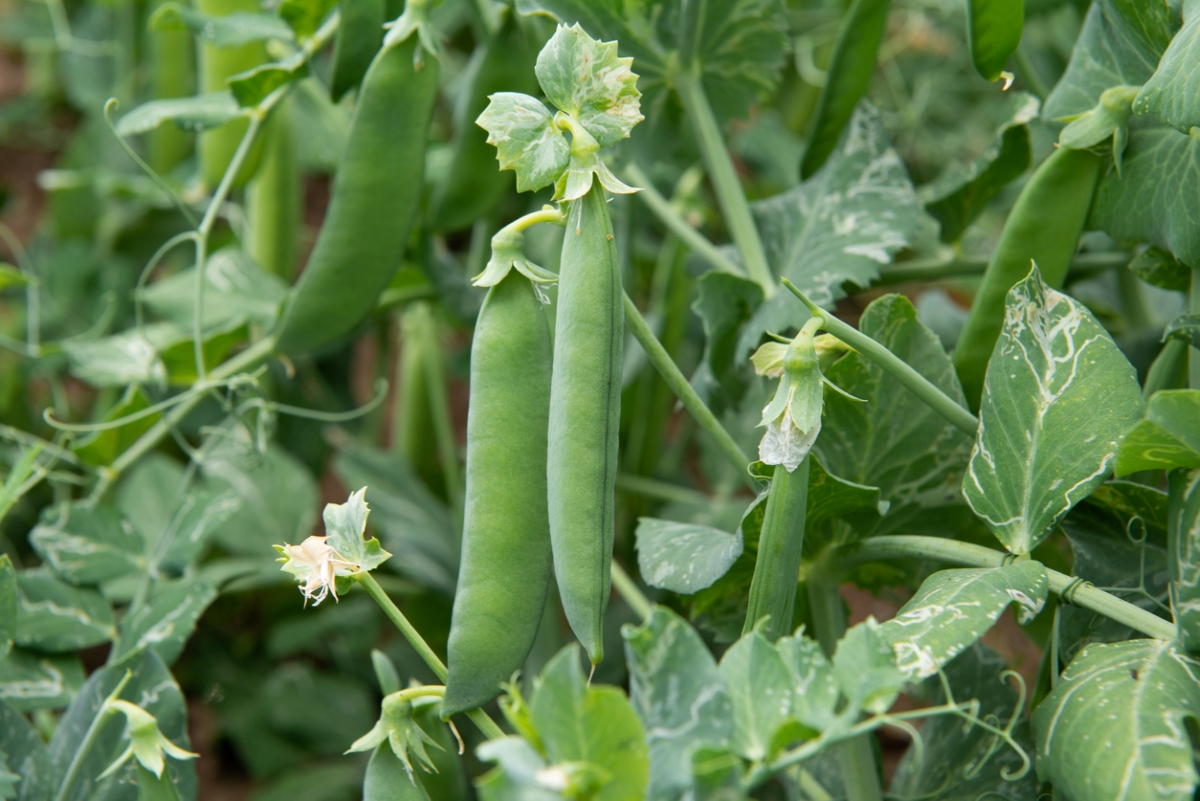
Looking for seeds to plant in August? Peas are one type of vegetable that you can successfully grow and harvest from seed this late in the season. As long as a pea variety’s maturity date (usually 70 to 90 days) occurs before the average first hard frost date, adding peas to your garden beds can finish off your growing season with delicious crispy veggies.
Add some compost to your soil and sow the seeds directly in the garden—ideally on an overcast day or when there’s some rain in the forecast to jump-start germination. Keep the soil moist and plant the seeds in the shade of other garden plants to protect them in case a last hit of intense heat arrives.
USDA Hardiness Zones: 2 to 11
17. Sedum (Sedum spp.)
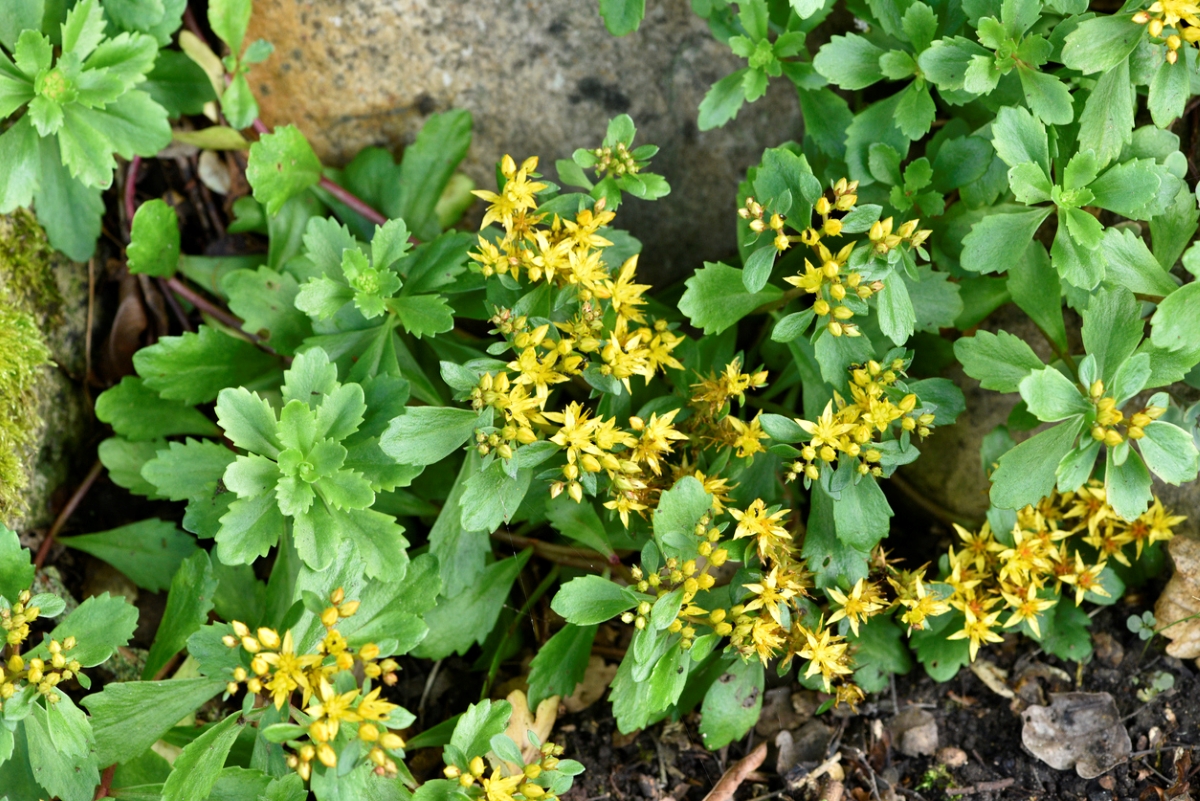
Add sedums to gardens in drier locations. These succulents are members of the stonecrop family. They can be upright or low-growing, offering options for a garden’s landscape aesthetic. Later in the season is an excellent time for planting perennials like these in colder areas because they can establish a healthy root system and slowly move into winter dormancy, making them better prepared for next year.
Hardy, low-maintenance, and drought-resistant sedums grow in both poor and rocky soils. They’re great for pollinators, container gardens, bed borders, and more.
USDA Hardiness Zones: 4 to 9
RELATED: The Best Low-Maintenance Ground Cover Plants for Your Property
18. Spring Cabbage (Brassica oleracea, Capitata group)
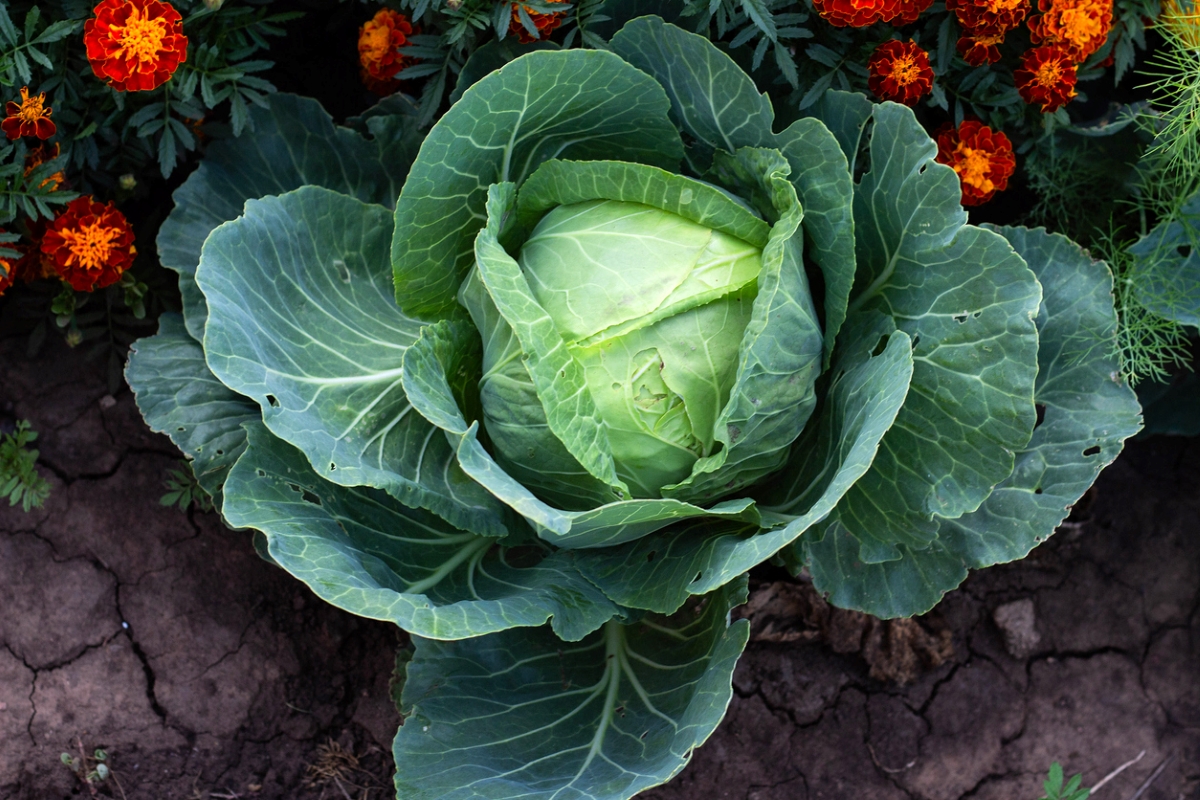
When playing the long game in your garden, you may opt to plant your spring cabbage now. Cabbage may take up to 6 months to be ready for harvest, so sowing your seeds in August for overwintering offers you heads to pick come early spring. Just keep in mind the variety when choosing late-season cabbages, as well as the zone. In many zones, cabbage must be harvested in early winter.
Before planting in a sunny location, add some compost to your firm, freely draining soil to give the seeds the nutrients they need. Provide them with constant moisture, feed them to boost their growth, and cover them with nets to protect them from garden pests.
USDA Hardiness Zones: 2 to 11
19. Asters
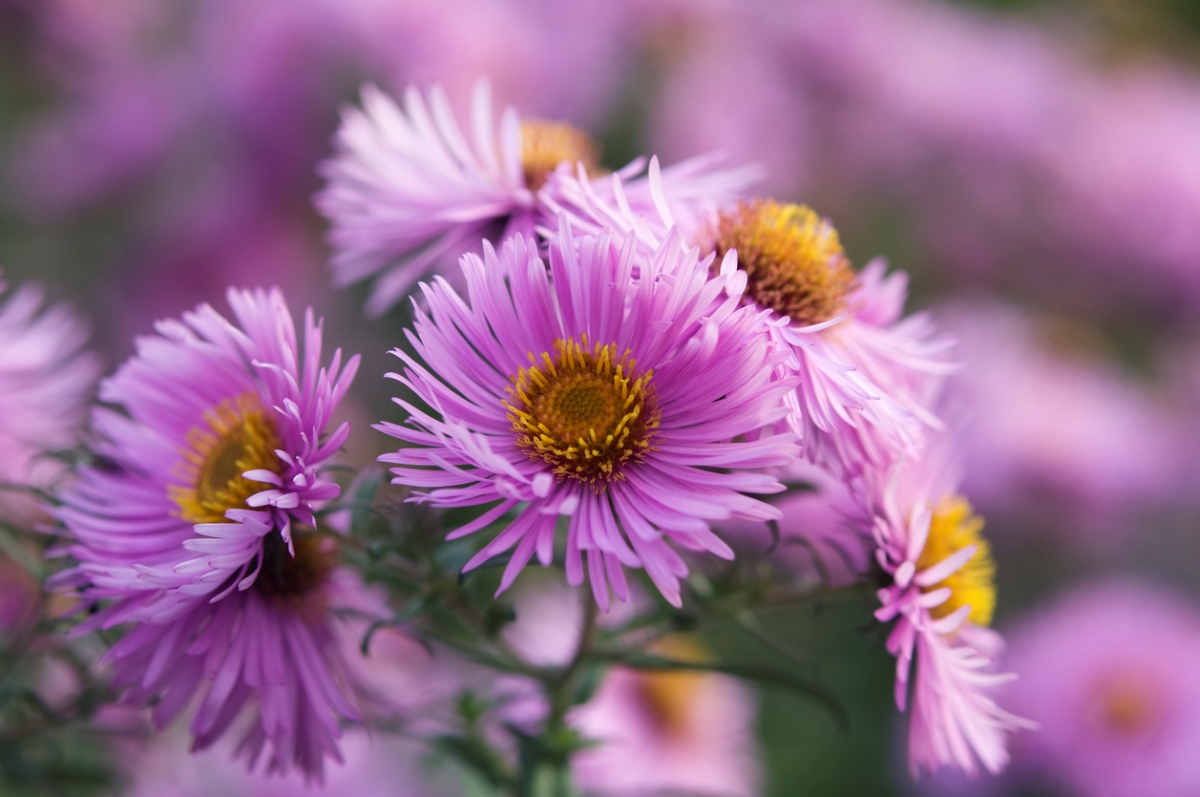
Balance out the impending colors of fall foliage with these purple members of the daisy family. Asters are perennials that add a burst of life to a garden bed that’s slowing down on growth. These lovely blooms last weeks to months, depending on the species and the climate, so choose one that suits your zone.
Aster flowers bloom late in the season, so August is a great time to add starter plants to the garden. They like full or partial sun, moist, well-draining soils, and a bit of mulch to keep them from becoming too warm in the August heat.
USDA Hardiness Zones: 4 to 8

